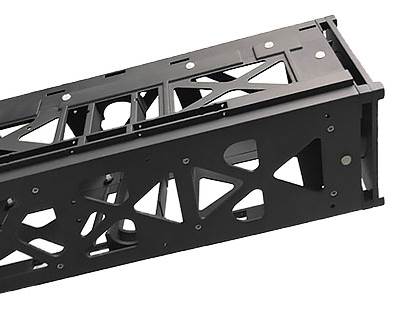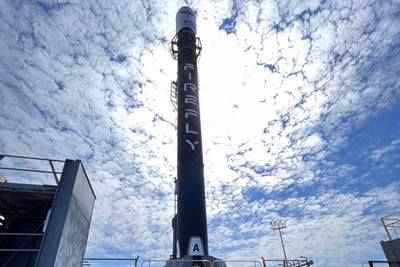Windform LX 3.0 composites contribute to OreSat0 CubeSat deployment
Portland State Aerospace Society, incorporating CRP Technology’s GFRP composite materials and SLS 3D printing, sent its CubeSat nanosatellite into low Earth orbit in 2021, where it continues to operate successfully.
3D-printed components were manufactured by CRP USA (Mooresville, N.C., U.S.) for the Portland State Aerospace Society’s (PSAS, Oregon) OreSat0 CubeSat, Oregon’s first satellite. The satellite has been operating successfully since its deployment into low Earth orbit (LEO) in March 2021. A turnstile antenna assembly, a star tracker camera lens and sensor assembly and a battery assembly were all 3D printed out of Windform LX 3.0 glass fiber-reinforced polymer (GFRP) material. These assemblies all met the extreme vibration, outgassing and thermal performance requirements for LEO.
CubeSats have been launched by dozens of countries, universities and companies all around the world. Joining the fray, the PSAS is an open source, interdisciplinary student aerospace project at Portland State University, with collaborators at most other Oregon universities. The organization develops sophisticated amateur rockets, small liquid fuel rocket engines and CubeSat nanosatellites.
Prior to employing selective laser sintering (SLS) and Windform LX 3.0 for manufacturing OreSat0’s subsystems, PSAS members used other technologies. “We designed and manufactured the parts locally using inexpensive FDM machines until we prototyped a design that worked,” members note. “We then switched to SLS 3D printing, which worked extremely well. But we couldn’t find SLS parts that could stand the temperature extremes and that were vacuum rated to NASA and ESA outgassing standards.”
Using Windform LX 3.0, however, enabled the PSAS team to design the parts for 3D printing, run quick turns to prototype on local printers, and print their final engineering and flight units out of Windform.
The PSAS team recognized three crucial advantages by the use of Windform LX 3.0 and the industrial 3D printing technology process:
- The SLS process provides robust parts that can take environmental testing, including 14 grams of random vibration in all three axes and thermal vacuum cycling from -40 to +80°C.
- The Windform LX 3.0 provides critical outgassing compliance that’s not available with any other SLS process.
- Windform LX 3.0 provides a non-conductive assembly that can be safely used next to electrical components, such as PCBs, batteries and antennas.
It is also noted that Windform LX 3.0 is easy to work with, and surpassed the “other 3D printing materials, including the other FDM, SLA and SLS technologies that we’ve used.”
The team specifically chose Windform LX 3.0 from the Windform Top-Line range of composite materials for powder bed fusion (SLS). It enabled the PSAS team to use 3D printing processes on their critical subsystems, including the deployer for the tri-band turnstile antenna. The antenna has three separate antennas (UHF at 436.5 MHz, L band at 1.265 GHz and L1 at 1.575 GHz) each with four elements; all 12 of these elements are deployed using nylon monofilament lines and only a single melt resistor. According to the team, “There was no way we would have been able to get the packing density of three bands with four elements each in anything other than a 3D-printed, non-conductive process. We don’t know of any other satellite with this kind of antenna density.”
Using CRP’s Windform LX 3.0, PSAS members were also able to mount their star tracker sensor and lens on a small daughterboard that kept the entire assembly to a single 10-millimeter-tall card form factor. In addition, the composite materials aided in the development of a very compact and rugged battery assembly
Prior to integration in the launch vehicle, OreSat0 was subjected to three axis 14-gram random vibration, -40 to +80°C thermal cycling and vacuum cycling tests. Windform performed well for all tests.
“Working with nanosatellites means extremely limited volume for all systems, so the ability to evolve and maximize the use of our space has been very beneficial,” PSAS members say. “We pack a lot into a small space, and we can plan to use nearly every cubic millimeter when we can use 3D printed parts. Windform LX 3.0 was a game changer for us: it allowed us to use 3D printing to innovate, rapidly iterate and minimize the volume and mass of our subsystems while being fully functional when in its final environment: space!”
OreSat0.5 is being readied for flight in October 2023, and OreSat1 is scheduled for a deployment off of the International Space Station (ISS) in early 2024.
The Portland State University satellite team: An interdisciplinary team of electrical engineers, mechanical engineers, computer science, math majors and business students.
The OreSat bus project
PSAS offers an open source OreSat bus which is offered as an inexpensive “DIY” platform for designing and building 1U through 3U CubeSats. The goal is to develop better students through hands-on interdisciplinary engineering projects. PSAS currently have three satellite missions in the works.
“OreSat is our fully open source, modular, and reusable CubeSat system designed for educational teams,” a PSAS member explains. “OreSat uses a card cage system, which allows cards to be reused on different missions from 1U to 3U CubeSats. Cards include everything you would expect aboard a CubeSat: an on-board computer with multi-band radios, a battery pack, a star tracker, a GPS receiver and the beginnings of an attitude determination and control system [ADCS]. Solar modules are mounted on the outside of the aluminum frame, along with deployable omnidirectional antennas.”
Everything is designed, built and tested by interdisciplinary student teams. Mechanical engineers work on the structure, thermals and CAD; electrical engineers design the cards made of PCBs (standard two and four layers boards); and computer science students program the Linux boxes and microcontrollers that run the CubeSat.
“There are very few open source satellites in the world, and ours is probably the most fully featured,” PSAS members add. “We are currently collaborating with four other universities who are building satellites and ground stations based on our projects.”
Related Content
Combining multifunctional thermoplastic composites, additive manufacturing for next-gen airframe structures
The DOMMINIO project combines AFP with 3D printed gyroid cores, embedded SHM sensors and smart materials for induction-driven disassembly of parts at end of life.
Read MoreManufacturing the MFFD thermoplastic composite fuselage
Demonstrator’s upper, lower shells and assembly prove materials and new processes for lighter, cheaper and more sustainable high-rate future aircraft.
Read MoreA new era for ceramic matrix composites
CMC is expanding, with new fiber production in Europe, faster processes and higher temperature materials enabling applications for industry, hypersonics and New Space.
Read MoreCarbon fiber, bionic design achieve peak performance in race-ready production vehicle
Porsche worked with Action Composites to design and manufacture an innovative carbon fiber safety cage option to lightweight one of its series race vehicles, built in a one-shot compression molding process.
Read MoreRead Next
Small sat demonstrator enabled by CRP Technology's Windform composite materials
Selective laser sintering and CRP Technology’s Windform XT 2.0 carbon composite material was recently selected for the manufacture of a 3U CubeSat demonstrator.
Read MoreFirefly Aerospace's Alpha, launch services company selected by NASA for VADR missions
The composites-intensive Alpha launch vehicle will be used in NASA missions to deliver payloads such as CubeSats.
Read MoreDeveloping bonded composite repair for ships, offshore units
Bureau Veritas and industry partners issue guidelines and pave the way for certification via StrengthBond Offshore project.
Read More

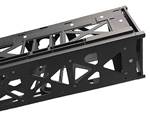


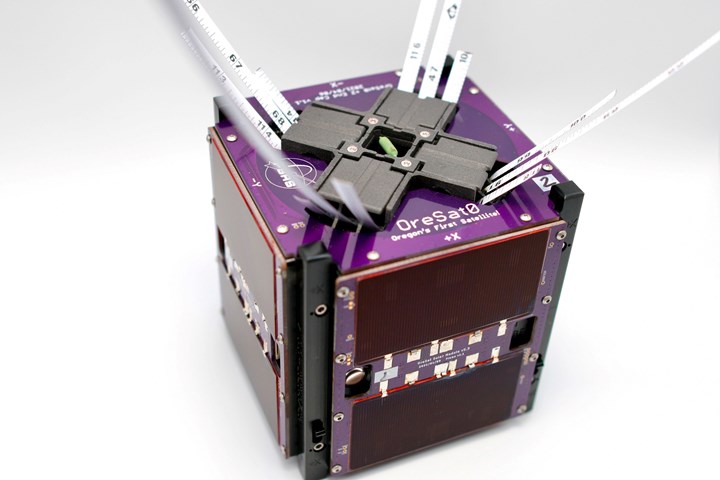



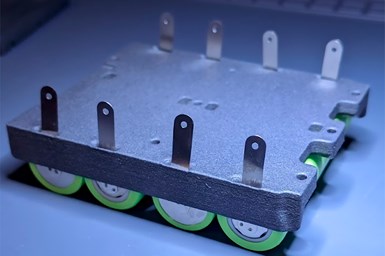
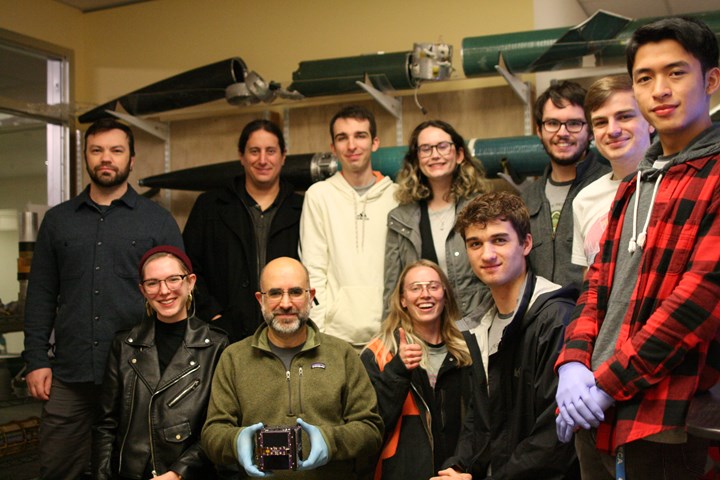




.jpg;maxWidth=300;quality=90)











